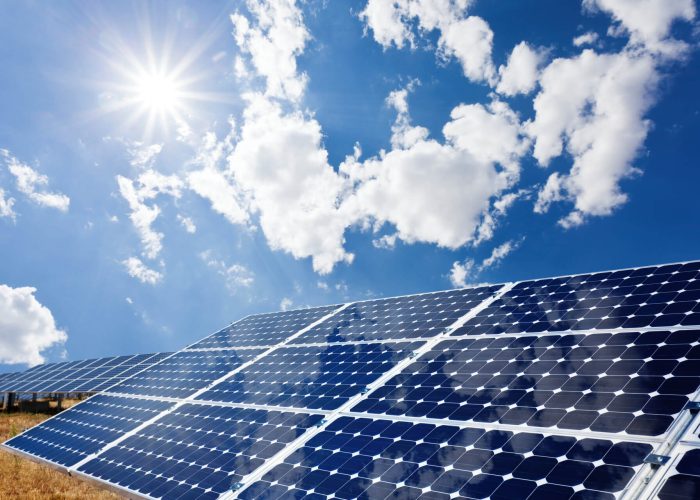A Brighter Future: Solar for Schools
February 6, 2024

Solar power has long been touted for its environmental impact, but with the latest advancements in technology and quicker return on investment, solar energy is now the best way for schools to shine.
Today, an estimated 4 million students attend a school in the U.S. with some form of solar power application. Nearly 5,500 schools currently use solar energy systems and that number will continue a rapid ascent as solar panel efficiencies improve and manufacturing costs decline. A fundamental reason for solar power’s success in K-12 schools is the wide range of benefits offered to stakeholders. School communities see a reduction in utility bill costs and a contribution to their sustainability initiatives. Students and teachers are afforded a host of educational opportunities. Here are some common questions about the use of solar power in K-12 schools.
The most common benefit associated with solar power systems is the opportunity to save money and energy. The recent decline in installation prices, along with increasing electricity costs, can make solar one of the most cost-effective ways to save energy. While the cost of solar varies by state and incentive programs, the general cost of a system can range from $1.75 to $2.75 per watt installed. This includes the cost of the materials, installation, system size permits, and interconnecting the system to the electrical grid.
The cost of a small demonstration solar system (1 to 5 kW) could range from $3,000 to $30,000, which would cover roughly 200 square feet of panel space. In contrast, a larger system designed to cover a significant portion of the school’s energy could cost millions. A system of this size would have panels covering several acres of land.
There are a number of factors considered when designing a solar system. For example, solar panels should face due south to maximize the amount of sunlight the panels collect. If the school has a pitched roof that does not face south, solar PV systems are still viable, but the performance will be slightly less with a southeast or southwest-facing system.
If suitable land is available, it is beneficial to install ground-mounted panels in an open space. Ground mount systems tend to be less expensive and produce more power. Solar awnings are also an option to provide shade in the parking lot but are more expensive than both roof and ground.
From beginning to end, the solar process requires a comprehensive approach using energy usage trends, electricity consumption, and a thorough understanding of the facilities. The solar system chosen must meet the financial and energy needs of the school, current, and future.
The timeline below walks through the seven basic steps of the solar energy process from an owner’s perspective.

The photovoltaic (PV) cells in solar panels use particles of light to knock electrons free from atoms and generate a flow of electricity. The resulting current of electricity then runs through a device called an inverter, which allows power to move to the building.
When the school’s power demands exceed the solar system’s production, the building continues to use electricity from the utility. At the end of the billing cycle, the school’s electric bill reflects the total energy consumed minus the electricity that was produced by the solar system. The sum of these two calculations is called net metering. Grid-connected systems typically operate via a net metering agreement with the local utility. The owner either receives a credit towards their next electric bill or a payment is made for excess power produced by the solar panels. Each state varies regarding the rules governing how the client is credited for excess generation.

Performance Services’ Solar Projects
Schools essentially have two possibilities for paying for their solar systems, direct or third-party ownership. Direct ownership makes sense if the school is able to raise the capital to pay for the system. Third-party ownership involves a developer or group of investors who own the system and sell the power generated to the school for a set period of time, typically 15-25 years. Performance Services supports both options.
In many states, there are numerous options for solar that do not require up-front capital. These include bonds, financial loans, equipment leasing, or third-party financing. Including solar in a guaranteed energy savings contract is also an option.
A public owner’s desire to implement sustainable and “green” practices can serve as a catalyst to pursue renewable energy sources such as a solar power initiative. With solar systems, students are able to see first-hand how sunlight is converted into electricity. And students can play a powerful role in a school’s sustainable projects.
Both utility-grade and demonstration installations can be integrated into a school’s STEAM (science, technology, engineering, arts, and math) programs. There is an abundance of excellent teacher and student training resources for the classroom, such as the National Energy Education Development (NEED) project. Performance Services is pleased to provide classroom grants to help fund K-12 curriculum and classroom learning kits for our utility-grade solar installations. Take a look at a number of other useful classroom resources:
For years utility bills have been an inevitable expense. Solar power is now a viable renewable option to reduce electricity costs and put educational facilities back in control of their utility bills. These benefits can be even greater when combined with a guaranteed energy savings project that tracks, measures, and guarantees building energy savings performance. Understanding the production and consumption of a facility’s energy usage will help maximize solar power’s energy savings and help K-12 schools and higher education truly shine.

This article was shortened and published by the Association of School Business Officials International in their monthly magazine, School Business Affairs.
Click Here to Read the ASBO International Article
Are you ready to contribute to a sustainable future with solar power? Contact us today, and our solar team will work with you to design, right-size, and install solar to offset your electricity consumption.
